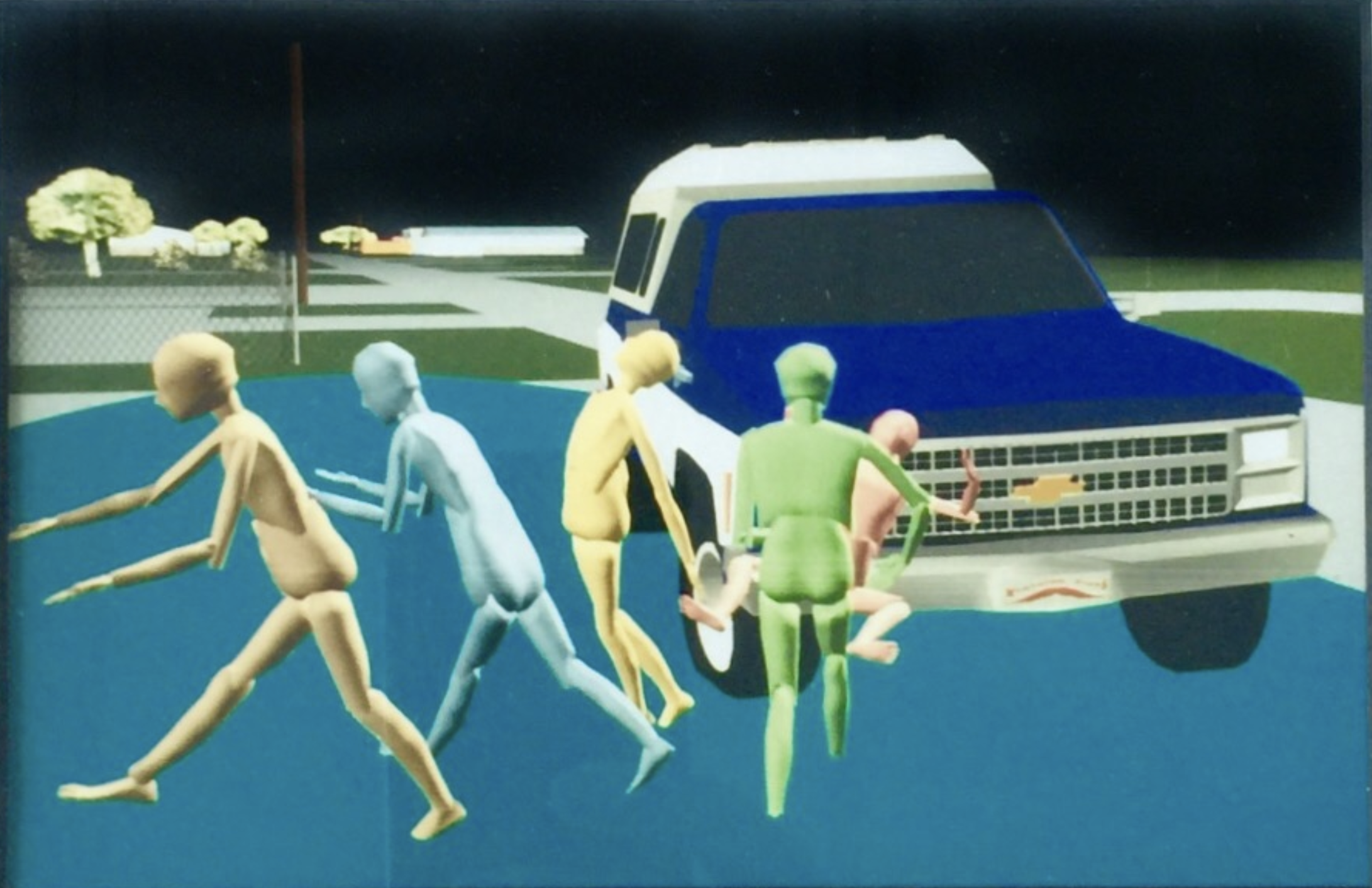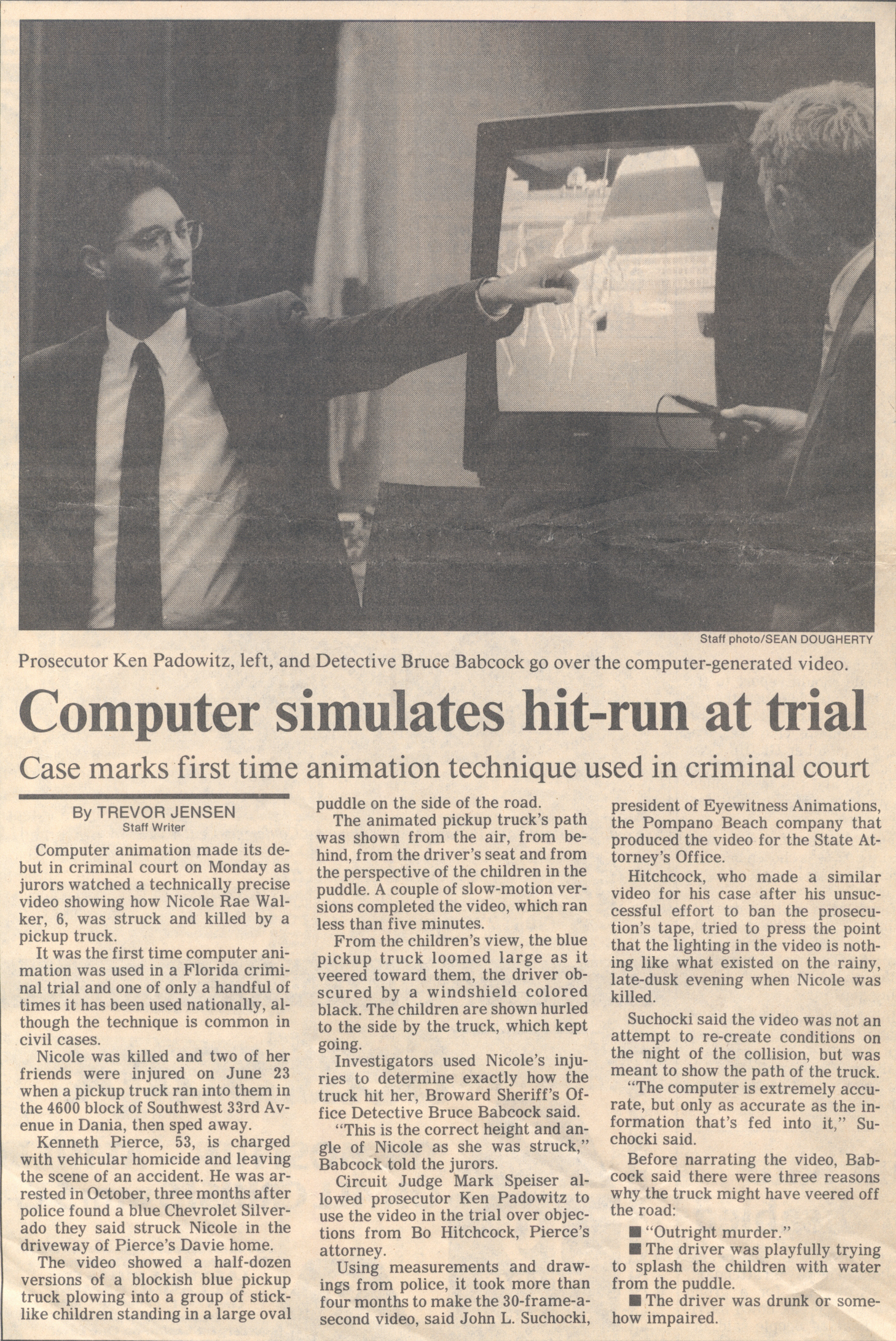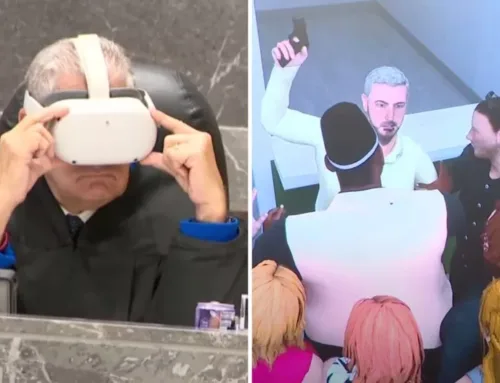Ken Padowitz, the defense lawyer representing a Coconut Creek man accused of trying to kill his neighbor by running over him with a Dodge Viper, wants to put jurors in the driver’s seat through the use of the latest in technology — virtual reality goggles that promise to give them a look at the alleged crime from the perspective of the defendant.

A Broward jury may be among the first in the country to experience a new dimension in expert testimony, if a former prosecutor has his way.
Ken Padowitz, the defense lawyer representing a Coconut Creek man accused of trying to kill his neighbor by running over him with a Dodge Viper, wants to put jurors in the driver’s seat through the use of the latest in technology — virtual reality goggles that promise to give them a look at the alleged crime from the perspective of the defendant.

Trial Lawyer Ken Padowitz speaking to the Jury
Padowitz filed a motion last week asking Broward Circuit Judge Ernest Kollra to allow the jury that will decide his client’s case to use virtual reality goggles to immerse themselves in the testimony of an expert witness in accident reconstruction.
It hasn’t been done in Broward before. Padowitz is fairly certain it hasn’t been done anywhere in the Unites States. It wouldn’t be the first time Padowitz was on the leading edge of introducing computer animation in the courtroom.

Back in 1992, Padowitz was a prosecutor in Broward County, looking to put a defendant behind bars for manslaughter in a hit-and-run case. He convinced a judge to allow jurors to view a two-dimensional computer animation on a television screen, a decision that was later upheld by an appeals court and paved the way for the use of computer animation in countless criminal trials since.
Now Padowitz is hoping to pave the way for 3-D animation and virtual reality. A hearing on his motion is scheduled for Friday. The Broward State Attorney’s Office has not filed a response to the motion.

In 1992, Trial Lawyer Ken Padowitz introduced the First Animation in Court
“An expert’s opinion is admissible to present to a jury,” Padowitz said. “We’re just taking it one step further. They are going to be able to look as if they are right there, able to look around, to see what the defendant saw.”
Benjamin Siegel, 47, faces a maximum of 30 years in prison if convicted of first-degree attempted murder. Padowitz hired an expert to testify that Siegel did not intentionally strike the victim with his car. The virtual reality presentation, designed by the Pompano Beach graphics company Eyewitness Animations, will illustrate the expert’s findings.
“It’s the expert’s testimony that’s admissible,” said Padowitz, “and the illustration is an extension of the expert’s testimony. There was no intent to commit a murder.”
Jack Suchocki, president of Eyewitness Animations, said the virtual reality headsets would put the juror between the two front seats of the vehicle.
“The flexibility and ease of use are dramatic,” Suchocki said.

The juror’s field of vision will be 360 degrees, meaning anyone could turn around and get a look at an illustration of the car’s back seat, though that would be an inappropriate use of the technology, he said.
“One of the benefits of this is we can actually record what each juror is looking at,” Suchocki said. That would ensure each juror is focusing on the evidence, not the technology, he said.
Eyewitness Animations was the same company that produced the computer animation in the 1992 case that introduced the technology to South Florida courts. Suchocki said he foresees virtual reality headsets being used by juries in dozens of other cases, including car accidents and plane crashes.

Padowitz is preparing a similar motion to use VR headsets in a shooting case. That motion has not been filed.
Putting jurors in a goggles forces a tradeoff that affects both prosecutors and defense lawyers — if the technology works as promised, lawyers won’t be able to see the initial reactions of their audience. You can’t see the eyes of a juror wearing a headset.
“The reality is, you want to see the jury and you want to see their face during the trial,” Padowitz said. “We’re really watching the video with them and using that, after the jury sees it, to make our arguments.”
If the judge allows it.








